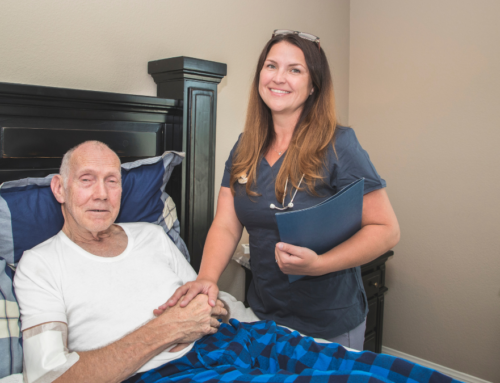
Is the COLA (Cost Of Living Adjustment) losing its fizz? Many seniors now feel that the annual Social Security cost of living increase is failing to keep up with the soaring prices of everything from gas and heating bills to groceries and prescription drugs. As a result, seniors are suffering, and they’re suffering badly.
Back in 2005, for example, the Social Security cost of living increase was just 2.7 percent. But if you filled up your car at the gas pump, you probably noticed the 28 percent jump in gas prices. And when you paid your heating bill, you probably noticed that the price of home energy soared by double digits as well.
Meanwhile, the Federal Reserve kept raising its rate last year as well, meaning that seniors watched helplessly as their already diminished spending power was cut even further as they paid higher rates on credit card bills, car loans and adjustable rate mortgages.
The absence of a fair Social Security cost of living increase affects seniors in a very real way. Fran, a TREA Senior Citizens League (TSCL) member from New Hampshire, is typical of our members. She follows the news, knows what’s happening with her friends and detects even subtle changes in prices. She recently told us that even her beloved oranges are getting too expensive to buy at her local grocery store.
“I don’t think the politicians care about seniors at all,” she told us. “I have friends whose sole source of income is Social Security, and they struggle each month to make ends meet. Each year, it gets worse. The politicians don’t care about people like them!”
How The COLA Hurts You
The COLA is tied to changes in the Consumer Price Index (CPI). While the public commonly thinks of the CPI as one index, this is not the case. There are several CPIs–each of which measures inflation rising in different rates, depending on which “market basket” the government is looking at.
However, the government calculates COLAs using one of the most slowly growing indexes-the Consumer Price Index for Urban Wage Earners and Clerical Workers (CPI-W). It surveys the goods and services that younger workers use. But younger workers have far different spending habits than seniors, who must spend a much greater percentage of their income on health care.
When the government calculates the COLA for an 80-year-old war veteran using the spending patterns of a 28-year-old young mother, something has gone terribly awry.
How Underpayments Affect You
The government does track senior costs, however, and has done so since 1983-maintaining the Consumer Price Index for Elderly Consumers (CPI-E). If the government had used the CPI-E, seniors would have received a COLA increase of 3.1 percent last year instead of 2.7 percent. Does such a small percentage increase matter? In a single year, not much. Over time, it certainly does.
We had a similar situation in 2016 and 2017 when the COLA was zero and 0.3%, respectively. The CPI-E would have yielded 0.6% instead of zero, and 1.5% instead of 0.3%.
For example, if Fran retired with an average benefit of $360 in 1984, she would have received about $8,629 more over the past 21 years had the government used the CPI-E to calculate her COLA. With compound interest, that means that she would have had tens of thousands of dollars more to help with medical expenses, home energy costs, and mortgage payments–and she could have purchased as many oranges as she would have liked.
Seniors Pay High Price for Gap in Benefits Coverage
Since the Medicare Part D drug benefit was unveiled, it has proven to be even more confusing and inefficient than its critics predicted. Even seniors who have been able to register for the program must still struggle with a $3,000 gap in benefits coverage and a hefty monthly premium.
Already the government has had to change the program: The Centers for Medicaid and Medicare Services reversed an earlier decision prohibiting new Medicare prescription drug plan recipients from participating in free or subsidized drug programs sponsored by pharmaceutical manufacturers.
But we can’t stop there. The reversal fails to count the full value of these prescriptions toward seniors’ $3,000 obligation, an expense that could put many in the poorhouse.
The Bush administration claims that its new benefit is a good deal for people who are not eligible for Medicaid. Yet most individuals will pay not only a $250 deductible, but also 25 percent co-insurance on the next $2,000 in covered drug costs. And add roughly $32 a month per person for a monthly premium.
In addition, the new Medicare plan requires each senior to cover 100 percent of the costs over $2,000 until catastrophic coverage kicks in at $5,100.
We can and must close the holes that may ruin seniors’ fiscal health as they try to preserve their physical health.
Private companies are already taking action. A group of pharmaceutical companies announced a plan called “Bridge Rx,” which will help seniors trapped in the $3,000 hole afford their medications. Seniors will get drug discounts of at least 50 percent in exchange for a 15 percent co-pay.
Washington should also act by letting those who qualify for subsidized pharmaceutical manufacturer programs like Bridge Rx – but who concurrently pay a monthly Part D premium – count the full value of their medications’ formulary price toward the $3,000 gap.
The purpose of the Medicare prescription drug program was to help seniors, not generate revenue for insurers and pharmacy benefit managers. It’s time to deliver on the promises that were made.
What We Can Do
Over the past several months, we’ve been hearing from hundreds of seniors across the country. And what they’ve told us has come as no surprise. Even though Medicare is dominating the headlines, the Cost Of Living Allowance is dominating their thoughts.
They want action, and their message is clear. They’re tired of partisan squabbling in Washington. Although we seniors turn out in high numbers during each election cycle, our representatives too often take our votes for granted. Only by presenting a unified message in large numbers will we influence legislators to take us with the seriousness we deserve.
Silver Companions understands the challenges faced by aging adults, as well as those who care for them. We are here to help, and be a resource, in any way we can. Call or email us, for a free consultation. We can talk through your specific situation and make a recommendation based on your circumstances and budget. Call us at (678) 494-8129 or email us at info@SilverCompanions.com.





